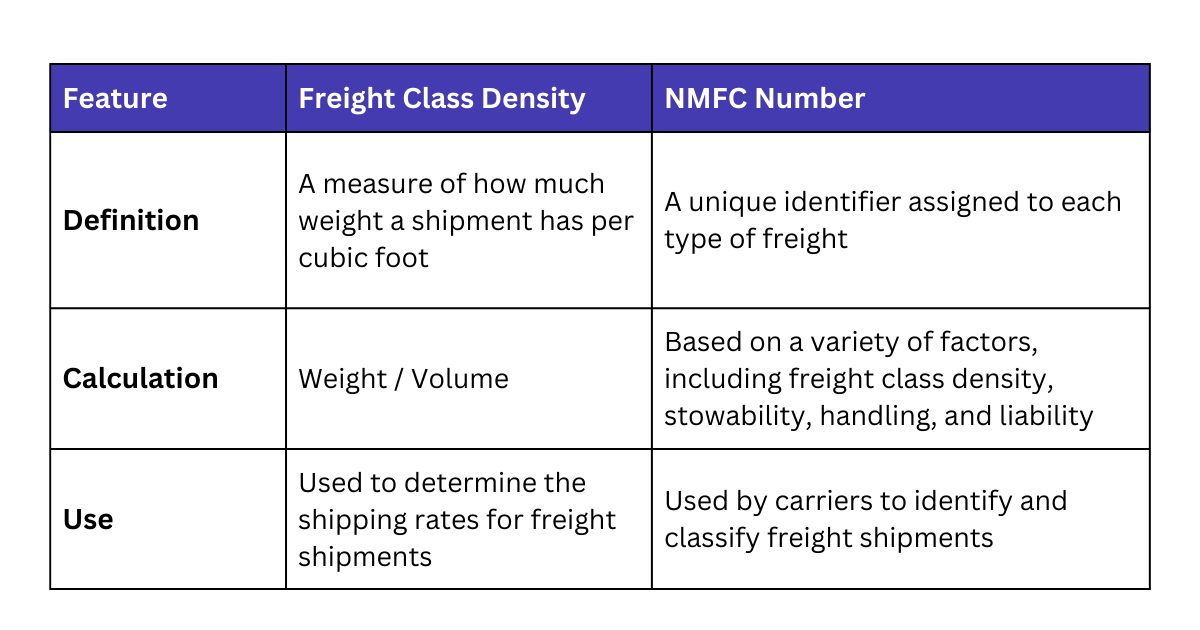
What's the Difference between Freight Class Density and NMFC Number
Are you looking to get the best possible shipping rates? Do you want to know the difference between freight class density and NMFC number? If so, then you've come to the right place! In this blog post, we'll discuss the difference between these two terms and how they affect your shipping costs. We'll also provide some tips for getting the best possible rates.
Freight class density and NMFC numberFreight class density is a measure of the weight of a shipment in relation to its volume or space. It is expressed in pounds per cubic foot (lbs/ft³). The freight density is calculated by dividing the weight of the shipment by its volume in cubic feet. The higher the freight density, the higher the freight class and the higher the shipping cost.
NMFC number is a standardized code assigned to a specific commodity or product based on its characteristics. The NMFC number is used to determine the appropriate freight class for the shipment, which is based on the density, stowability, handling, and liability of the product. The NMFC number is assigned by the National Motor Freight Traffic Association (NMFTA) and is used by carriers to determine the appropriate shipping rate.
The NMFC number is a four-digit code that is assigned to each commodity or product. It is used to identify the product and to determine its classification based on its characteristics. The NMFC number is used in conjunction with the freight density to determine the appropriate freight class for the shipment. The freight class is a number from 50 to 500, and the higher the number, the higher the shipping cost.
In general, commodities with a lower NMFC number and a higher freight density are assigned to a higher freight class, and therefore, have a higher shipping cost. For example, a shipment of bricks would have a higher NMFC number and a higher freight density, resulting in a higher freight class and higher shipping cost than a shipment of pillows, which have a lower NMFC number and a lower freight density.
Here is a table that summarizes the key differences between freight class density and NMFC number: How do freight class density and NMFC number affect shipping rates?
How do freight class density and NMFC number affect shipping rates?Freight class density and NMFC number are both factors that carriers use to determine the shipping rates for freight shipments. The lower the freight class density or NMFC number, the lower the shipping rate. This is because shipments with a lower freight class density or NMFC number are easier to handle and ship, and therefore less costly for carriers.
ConclusionIn summary, freight class density and NMFC number are both important factors in determining the cost of shipping a freight shipment. Freight density is a measure of the weight of the shipment in relation to its volume, while NMFC number is a standardized code assigned to a specific commodity based on its characteristics. The NMFC number is used to determine the appropriate freight class for the shipment, which is based on the density, stowability, handling, and liability of the product.
Use Deftship's freight class and density calculator to determine the right freight class for your shipment and get the best possible shipping rates.

Are you looking for more tips on shipping and logistics? Contact us today to learn how we can help you streamline your operations and reduce costs.